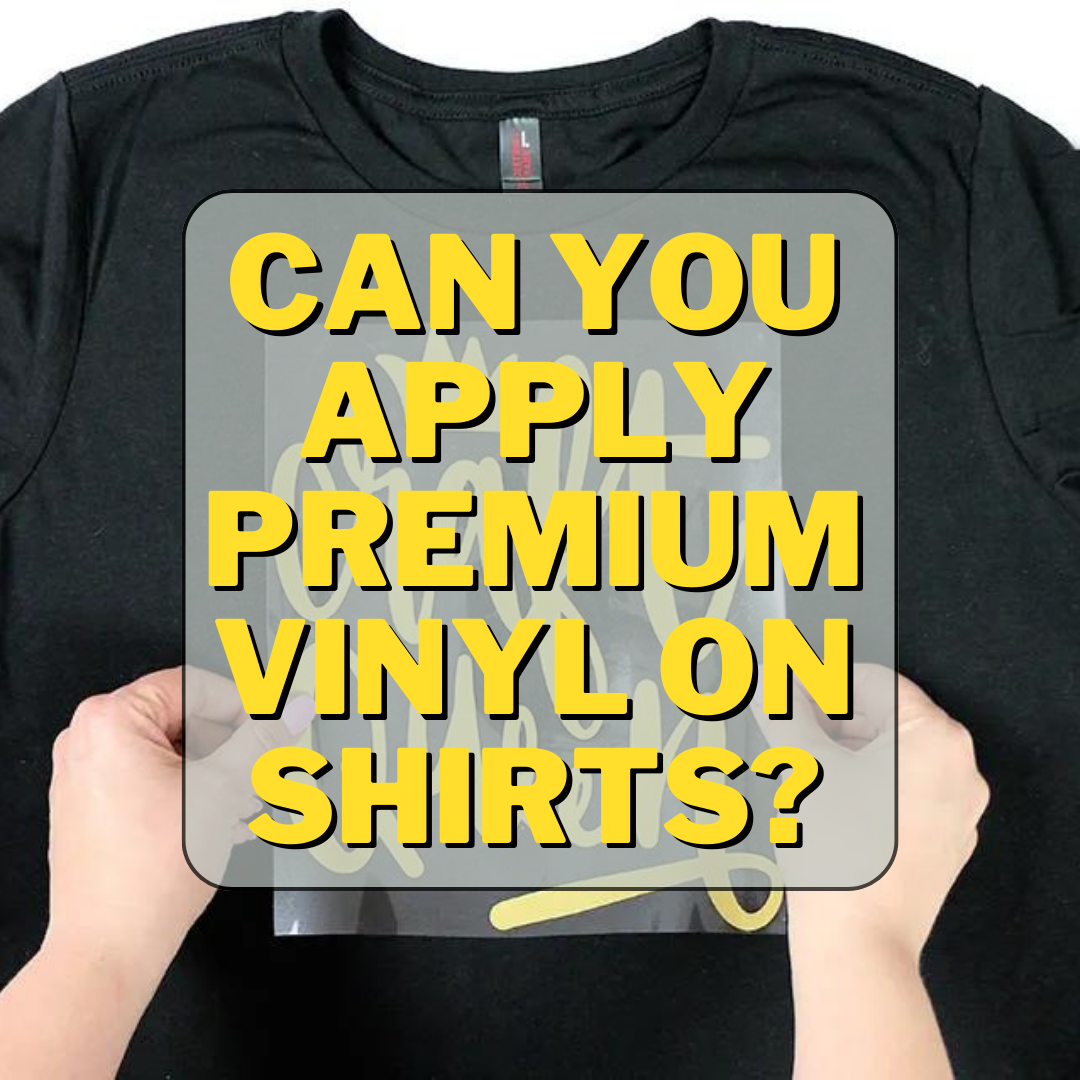Posted By Ahijoy On March 29, 2023
What Do I Need To Print T-Shirts At Home?
Transforming mundane, monochrome t-shirts into exquisite pieces of art through printing requires skill, patience and the right tools. There are different methods of printing that you can employ and for each, a different set of equipment is required. Whether you are a novice dabbling into t-shirt printing as a hobby or an expert who runs a home-based business, you would want to get the best paraphernalia needed for the task. What would that be? Let’s find out.

1. Printing T-Shirts Using Heat Transfer Vinyl
Heat Transfer Vinyl (HTV) printing is one of the most cost-effective and straightforward methods of producing custom t-shirts. Most newbies who want to create printed t-shirts or other items at home should begin with this technique. It is less expensive to start with and requires less technical knowledge than other printing methods.
HTV printing makes use of vinyl polymer, which is available in a roll or in flat sheets. It is typically available in one color with an adhesive backing that is activated with heat. A heat press machine or a dry home iron can be used to apply heat to it. HTV is cut, weeded and heat pressed onto the t-shirt.
Tools Needed For HTV Printing
For any project to succeed, proper tools are of utmost importance. The same goes for HTV printing. If you want the whole operation to run smoothly, you will need the following:

Vinyl For Heat Transfer
The first and the foremost requirement is to get a premium quality heat transfer vinyl from a reliable seller. You may select from a variety of textures, colors, finishes, and other options to ensure that your finished product is as near to your original idea as possible.
At Ahijoy, we have the best quality vinyl available in a wide variety at reasonable prices. You can choose from the following heat transfer vinyl films:

- Standard HTV: This is the basic monochrome vinyl in vibrant hues best for those who are just stepping into the t-shirt printing arena.
- Glitter HTV: Overlaid with little flecks of glitter, this HTV is available in both single shades and patterns.
- Metallic HTV: It has a pronounced sheen just like that of a metal which will make your t-shirt highly distinctive.
- Holographic HTV: If you love a gleam that has a psychedelic effect, this is the vinyl for you.
- Puff HTV: This vinyl rises when heat is applied to it creating a 3D effect. It is also available in Glow in the Dark variety.
- Patterned HTV: Buffalo plaid, stars, galaxy, checks, animal prints and a lot more, Ahijoy has many patterns to add life to your t-shirts.
- Surprise Series: This consists of the magical vinyl that changes color due to change in temperature or when exposed to sunlight. This collection also has reflective, Glow in the Dark, chameleon and flock HTV.
Each film is thin and flexible and easily moves around with the fabric of your t-shirt without peeling or cracking. The multifarious colors are vivid and long lasting that promise to make your designs extremely captivating.
Fabric Which Requires Printing
The fabric on which you will put your vinyl is another important component for HTV crafts. Your t-shirt should be of a material that is compatible with the vinyl. HTV works best with cotton, polyester, poly/cotton blends and the like fabrics. Start off with cotton t-shirts as they can withstand high heat.

If you are new to the world of crafts, revamp your old, monotone shirt first to get the hang of the process. With the passage of time, you can bring ingenuity into play and experiment with t-shirts in different fabrics.
HTV Cutting Machine
Cutting your HTV items by hand to get the required design is fully achievable however, if your design is intricate and difficult, using a sharp pair of scissors can be pretty tiring and tough. Plus you will not get the same professional result and neatness. Cutting by hand runs the danger of a minor error destroying your whole work.

It is highly beneficial to invest in the best quality cutting machine for carving HTV designs at home. It automates the procedure and removes the risk of errors. It will allow you to increase your output while decreasing your stress level. It comes with a software that gives you the liberty to use many different designs. You can even create your own design and transfer it on the software that your cutter uses. There are quite a few options available in the market such as Cricut, Silhouette, Brother ScanNCut, Graphtec and more.
Cutting Mat
A cutting mat is highly essential to protect your workspace from the cutter’s blade. It prevents the blade from getting dull. It also comes with a grid to help you cut your design of the right size. It is sticky and comes in different tack levels so that your decal stays in place while it's being cut. Buy some of the best quality cutting mats from Ahijoy.
Weeding Equipment
After you've cut the vinyl, you'll need to remove the negative pieces to bring out the design that you visualized before pressing it onto a t-shirt. You'll need an instrument such as a weeding pen which will help remove the extra vinyl from around and inside the design. A weeding tool eliminates unneeded vinyl so you can apply your pattern while emphasizing every detail.
Source Of Heat
Heat is required to adhere the vinyl design to your t-shirt. For this, you can use an ordinary dry iron or an HTV-specific heat press machine. A dry, household iron is a risky alternative since it cannot always cover the full surface of your vinyl design at once and might not apply the right temperature and pressure but it is usable.

A heat press, on the other hand, uniformly warms the whole vinyl design to a predetermined temperature while applying the correct amount of pressure. There are different kinds of heat press machines such as clamshell, swing-away, draw type, sublimation type and more. You can use the one that best suits your needs.
Protective Sheet
Since high temperature is involved in the HTV printing process, it is imperative to protect the fabric from its adverse effects. A protective sheet is kept on top of the design placed on the fabric before heat is applied to it. This can be a double-sided, non-stick Teflon sheet or a parchment paper. You can also use butcher paper.
2. Printing T-Shirt Through Sublimation
Sublimation is the use of heat to transfer design to the t-shirt so that the ink completely permeates becoming a part of it. Images and designs are printed on special paper and placed on the t-shirt before being heated to allow the ink to become part of the fabric. The garment will become beautiful, more breathable and pleasant to the touch as a result. The best thing is that the numerals, characters, and pictures will not peel, wear off, or wash away for a very long period of time!

Tools Needed For Sublimation Printing
Sublimation printing is different from HTV transfer hence you might need some more and different tools. Here’s a list:
Sublimation Printer
For sublimation, you require a special printer which can work with sublimation ink that is different and essential for the process. Your normal inkjet printer will not do the job. The Sawgrass SG500 and SG1000 sublimation printers are the most user-friendly and intuitive printers for beginners.
Heat Press
A heat press is the second most important piece of equipment to purchase. You can use an iron but for sublimation printing, we suggest you invest in a heat press machine for high quality, bright, and consistent prints.

Heat Press Temperature Guide For Vinyl
Sublimation Blanks
A sublimation blank is a plain, blank surface on which sublimation printing can be carried out - your medium, you can say. You've received your printer package, your heat press and now you're ready to start personalizing. When sublimating on a T-shirt, it should be noted that only items made of polyester or with a particular polyester coating can be sublimated
Ink And Paper
Sublimation ink is special as it directly turns into gas when heat is applied without first liquefying. It permeates the substrate leaving a long-lasting print. You will receive a complete set of ink cartridges with the printer package, but it is always helpful to keep an additional set of ink to avoid unpleasant events (such as running out of ink in the midst of an order!)
Sublimation Paper
This is a special printing paper that absorbs ink and retains it until it is transferred onto a substrate.
3. Direct To Garment (DTG) Printing On T-Shirts
In Direct to Garment (DTG) printing, aqueous inks are sprayed onto the t-shirt using the inkjet technology. This process is easy to set up therefore using it at home can be a fun and creative way to personalize your t-shirts. It enables you to create intricate designs in a full spectrum of colors. The prints are of high quality and long lasting. DTG printing will work best on cotton t-shirts as the fabric makes it easy to absorb inks.

Tools Needed For DTG Printing
Here’s what you need to start DTG printing of t-shirts at home:
DTG Printer
This is the most important tool for the process. There are several DTG printers available in the market that are designed for home use. For small scale printing, you can get a tabletop printer with one pallet. Research and compare different models to find the one that meets your needs and budget.

Pretreatment Solution
Before printing, you will need to apply a pretreatment solution to your fabric to ensure the ink adheres properly. This is an aquatic polymeric emulsion available in the market that fills the interstices of the fabric weave. When cured, it forms an invisible film that produces a smooth surface, perfect for the adhesion of inks, resulting in high-quality prints.
You can use a spray gun to apply the solution manually to your t-shirt but make sure it is done as evenly as possible. You can also use a pretreatment machine that automates the process but that is an added expense that you can avoid when printing t-shirts at home on a small scale.
A Curing Device
Once the design is printed, the ink needs to be cured to ensure it stays on the fabric. For this you will need a device that can dry the ink on your t-shirt. You can use your heat press machine for this step. You can hover your heat press over the print without touching it for 30 seconds to cure the ink.
4. Direct To Film (DTF) Printing On T-Shirts
Direct to film printing is a method in which you print graphics onto a special transfer film using a printer that is equipped with DTF inks. The film is then placed on the t-shirt where you want the design to be and using a heat press machine, the ink is transferred from the film to the surface. Through this method, you can print vibrant and detailed designs, especially on dark-colored fabrics. The process also gives you the liberty to print on a wide range of materials, thus you are not limited to cotton for your t-shirts.

Tools Needed for DTF Printing
Following equipment is highly essential for DTF printing on t-shirts at home:
DTF Printer
This is a special inkjet printer that uses CMYK settings. It uses specialized DTF inks to print high-quality designs onto transfer film. Do your research and get the one that gives you the best value for money.

DTF Transfer Film
This is a durable and flexible PET film available in different sizes. For printing t-shirts at home you can use sheets rather than a roll. It is designed to be printed on by a DTF printer. When applied to the t-shirt, the transfer film creates a high-quality, long-lasting print that is resistant to fading and cracking.
Hot-Melt Adhesive Powder
It binds the colored inks to the fibers in the fabric. Buy a high quality powder that adheres perfectly enhancing the longevity of your designs on the t-shirt maintaining the same vibrance even after multiple washes.
Heat Press Machine
A heat press machine is an important tool not only for transferring the design on the film but also for the curing process.

Special Software For DTF Designs
DTF printing uses RIP software. It enables the DTF printer to communicate with the computer and print designs in the vivid colors that have been originally visualized by the crafter.
Points To Consider Before Buying A Heat Press Machine
An automated heat press machine is an important tool for all the processes that allow one to print t-shirts at home. When buying it, consider the following factors:

- Do not compromise on quality even if it is a bit expensive.
- Choose a heat press that has a steel body and resists corrosion to ensure durability.
- Consider your work space before buying a heat press. Two feet of space is required for the clamshell model while a swing-away heat press needs at least three feet.
- Check the temperature range of the machine. If you only need to print t-shirts, a temperature of around 350 degrees Fahrenheit should suffice. Also check if the heat is distributed evenly or not.
- You will also have to consider the number of t-shirts you have to print every day. Choose a heat press that can work overtime once your orders increase without compromising on the quality of the product.
- For DTG and DTF printing, buy a heat press whose upper platen comes down vertically so it may be used for the curing process as well.
- Most importantly, research well before buying a heat press as it can make or break your t-shirt printing business.
Design Software For the Printing Processes
Last but not the least, you need a simple computer and a design software. Your computer does not have to be fancy but it must have plenty of storage space to save images. It must also support the graphic software required for the printing process of your choice.
You can use any design software for the processes mentioned above except with HTV and DTF transfer. When using heat transfer vinyl, your cutting machine will provide its own software such as Cricut has Design Space and Silhouette has Silhouette Studio. You can create the design on some other software but you will have to ultimately transfer it to the one used by the machines. With DTF you need the Raster Imaging Processor (RIP) to print the design on the special film.
The Cost Factor
When printing t-shirts at home, the cost of the process differs as well. This can be the decisive factor for many people who want to launch their own business. Following are the brief details:

For HTV Transfer
A good vinyl cutter will cost you between $250 and $350, while a good heat press will cost you approximately $200. Vinyl may be purchased in sheets or rolls, and it is typically reasonably priced. The tools used such as a weeding pen and cutting mat are also not expensive. Hence initially, for a small scale project, you can get everything within $1000.
For Sublimation Printing
Sublimation printing is a bit costly. It requires the use of a sublimation printer and paper, and a heat press. A dependable, high-quality sublimation printer may cost between $700 and $1800, while sublimation paper can cost roughly $20 for a hundred sheets. You will have to raise your budget for this but the results are breathtaking.
For DTG Printing
This process is quite costly primarily because of the printer which is the most expensive item. If you want the best quality equipment you will have to spend quite a lot. The ink cartridges are not cheap either. The baseline cost for a professional DTG printer is $10,000. The cost of a single ink cartridge starts from $200. Hence initially, you will have to spend around $10,000 to $20,000 for a quality set-up.
For DTF Printing
A DTF printing set up at home is far less expensive than DTG. The printer can be purchased for $1200 to $1400. The cost of ink is around $100 to $300 per liter. The transfer film costs $0.40 to $1.00 per sheet. If you also have to buy a heat press, the total cost of setting up a DTF printing system can range from $1,000 to $5,000 or more depending on the quality and quantity of equipment you purchase.
Important Tips For Printing T-Shirts At Home
In order to install a proper setup for printing t-shirts at home, keep these few points in mind:

- Your workstation should be properly organized with the required space for your equipment.
- It should be a well lit area for smooth workflow. For DTF and DTG printing, it should also be ventilated
- When using a cutting machine, it is imperative to do a test cut.
- Pre-press the t-shirt before any process for 5 to 10 seconds to remove moisture.
- Always choose the premium quality materials as the durability and longevity of your final product depends on it.
Frequently Asked Questions
Final Words
There you have it, a full guide about the tools required for HTV, sublimation, DTG and DTF printing on T-shirts at home to help you determine which one you should opt for. If you have the budget then sublimation or DTF printing is a good option since it is more durable than HTV. If you want to go big and want a professional set up, you can opt for DTG printing. Otherwise go for exquisite designs with heat transfer vinyl. After all, you know what you need for all of them.



